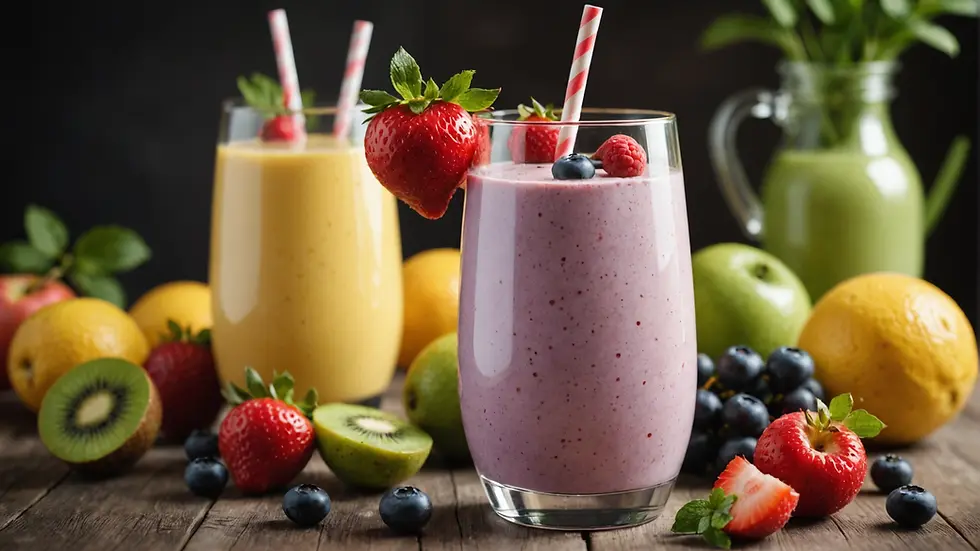Craving Control: How to Conquer Your Snack Attacks in a Snap
- S.L.Wofford
- Nov 7, 2024
- 4 min read
Cravings are a common experience that can catch us by surprise. They come at all hours—maybe in the late afternoon at work or during a late-night TV binge. The good news is that managing these cravings doesn’t require you to deprive yourself of your favorite foods. Instead, you can learn to balance indulgence and health, paving the way for a better relationship with food. This post offers practical strategies to help you manage cravings and avoid the guilt of binge eating.

Understanding Cravings
To effectively manage cravings, it’s crucial to understand their origin. Cravings can arise due to factors like emotional triggers, environmental cues, or nutritional deficiencies.
For instance, research indicates that 75% of people experience cravings as a response to stress, often leading to unhealthy eating patterns. Recognizing why you crave certain foods allows you to take control instead of falling into the cycle of bingeing and guilt.
Practical Tips for Managing Cravings
1. Allow Portion-Controlled Treats
One of the most efficient ways to manage cravings is to enjoy your favorite treats but in smaller, portion-controlled servings. For example, instead of eating an entire chocolate bar, try a couple of squares of dark chocolate.
This strategy does more than satisfy your sweet tooth. It prevents feelings of deprivation, which can lead to unhealthy bingeing later. Studies show that people who allow themselves small treats are 50% less likely to overeat later.
2. Healthy Swaps
When cravings strike, consider swapping out high-calorie snacks for healthier alternatives. This way, you can still enjoy a satisfying snack without derailing your diet.
Sweet Tooth Solutions
If you're craving something sweet, choose fruit over candy. For example, opt for fresh berries, apples, or bananas. These not only satisfy your sweet cravings but also provide essential nutrients. Alternatively, blend a smoothie with fruits like spinach, bananas, and yogurt for a nutritious and delicious treat.

Salty Cravings
For salty snacks, skip the chips and try air-popped popcorn seasoned with a pinch of salt or herbs. Roasted chickpeas are another excellent alternative, full of fiber and protein, and they deliver the crunch you crave.
3. Stay Hydrated
Your body can sometimes confuse thirst with hunger. Staying well-hydrated is vital for your health and can help stave off those unwanted snack urges.
Aim for at least eight glasses of water per day. Consider carrying a reusable water bottle to remind yourself to drink regularly. Doing so can reduce your cravings by up to 30%, helping keep you on track with your diet.
4. Distract Yourself
Coping with cravings can sometimes mean finding a distraction. When a craving hits, immerse yourself in an activity you love—whether it's a brisk walk, reading a captivating book, or picking up a new hobby.
Distraction can reduce the power of cravings. For many, engaging in a creative project can push aside snack desires, allowing you to rethink your need to indulge.
5. Identify Triggers
Tracking your cravings can yield insights into your eating patterns. Pay attention to when and why cravings occur—are they stronger at certain hours, or triggered by stress?
For example, if you often snack during stressful situations, consider adopting alternative stress-relief techniques like mindfulness or deep-breathing exercises. This shift can help you tackle stress without turning to food.
Listening to Your Body
It's vital to recognize the difference between true hunger and cravings. Developing an awareness of your body's signals can improve your food decisions.
Before reaching for a snack, take a moment to evaluate your hunger levels. You might find that you’re not as hungry as you thought, allowing you to make healthier choices.
6. Keep Busy
Staying occupied can significantly curb cravings, especially during peak snack times. Fill your schedule with engaging activities or projects that keep your hands busy.
Consider starting a DIY project around the house, organizing your bookshelf, or diving into a creative pursuit like painting or writing. Keeping your mind and body engaged reduces the unconscious urge to snack.

7. Create a Balanced Meal Plan
Planning your meals can help manage cravings effectively. When your meals are balanced and rich in nutrients, the likelihood of craving unhealthy snacks decreases.
Make sure to include a variety of proteins, healthy fats, and fiber-rich carbohydrates in your meals. This balance helps keep you satisfied for longer periods, reducing the temptation to snack needlessly.
Final Thoughts
Managing cravings requires practice and awareness, but the rewards are worth it. By allowing yourself portion-controlled treats, making healthier swaps, staying hydrated, and planning balanced meals, you can effectively conquer snack attacks without guilt.
Ultimately, balance is key. You can enjoy the foods you love in moderation while leading a healthy lifestyle. Embrace the idea of mindful eating, pay attention to your body, and remember to be kind to yourself. Cravings are a normal part of life. With these strategies, you can master them more effortlessly than you might think. Give these tips a try and discover how easy it can be to regain control over those tempting snack moments!


